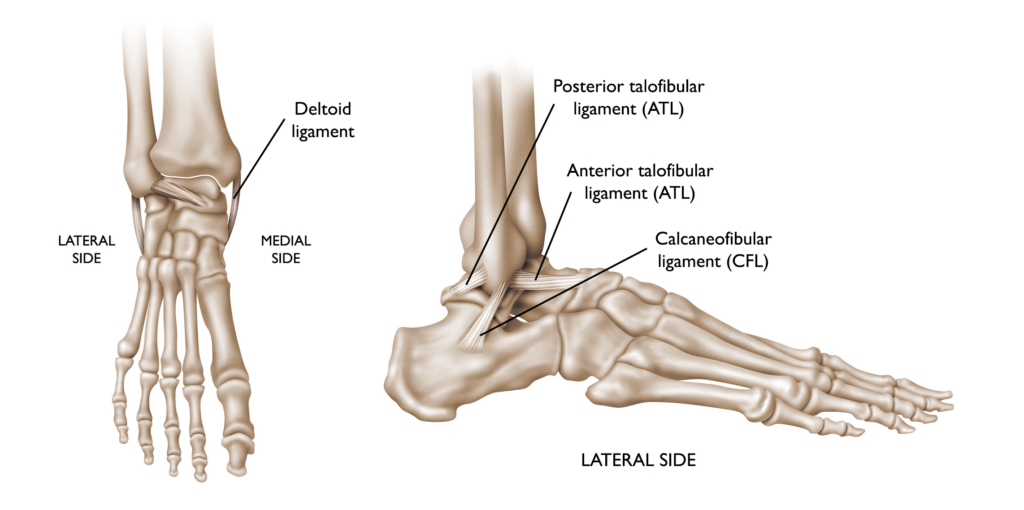I’m Larry Benson, MD, CAQSM, from Ortho On Call and OrthoVirginia. In a continuation of my last post, I want to resume talking about soccer injuries. Today, let’s look at the most common reason for staying on the bench during a game: sprained ankles.
Anatomy of an Ankle Sprain
There are tough bands of tissue in our ankles called ligaments, which help stabilize joints. When these ligaments are forced beyond a normal range, a sprain occurs. Typically, a sprained ankle is an injury to the ligaments on the outer side of the ankle.

Source: Sprained Ankle – OrthoInfo – AAOS
These are a few common ways an ankle can become sprained while playing soccer:
- Movement resulting in a roll, twist, or turn of the ankle.
- Landing incorrectly from a jump.
- A collision, causing instability to the ankle.
Symptoms of an ankle sprain
- Pain with activity or weightbearing and at rest
- Swelling
- Bruising
- Tenderness to the touch
- Instability
Diagnosis
Once you’re in the exam room, your doctor will ask you questions about the injury and perform an examination of your foot and ankle. This often involves:
- Observation of the injured ankle in comparison to your other ankle.
- Palpation, meaning your doctor will gently press around the ankle to see which ligaments are injured.
- Range of motion testing in which you will be asked to move your ankle in different directions.
- Stability testing in which your doctor may pull your ankle in a controlled manner in different directions to assess the stability of the joint.
Sprains to the ankle are commonly a simple clinical diagnosis, but occasionally, X-rays or MRI scans will be obtained to rule out a fracture or injury to nearby tendons.
Sprain Classifications
A sprained ankle will be graded by your doctor by how much damage the ligaments have suffered.
- Grade 1: Slight stretching of the ligaments and microscopic tearing of ligament fibers; mild tenderness, bruising, and swelling, little to no weightbearing pain; zero instability
- Grade 2: Partial tearing of the ligament; moderate tenderness, bruising, and swelling; mild weightbearing pain; minor instability.
- Grade 3: A complete tear of the ligament; significant tenderness, bruising, and swelling; severe weightbearing pain; considerable instability.
Treatment
Nearly all ankle sprains can be treated without surgery, even a complete ligament tear, if the joint is immobilized and rehabilitated appropriately. At Ortho On Call, we are conveniently open to diagnose and stabilize your injury without an appointment. If you think you’ve sprained your ankle, it’s vital to see a doctor so we can assess the injury and recommend treatment.
Mild sprains can typically be treated at home using the RICE method:
- Rest your ankle.
- Ice should be applied immediately and then used for 20-30 minutes, 3-4 times a day.
- Compression bandages will immobilize and support your ankle, and they may help with swelling.
- Elevate your ankle above heart level as often as possible during the first 48 hours of injury.
Prevention
The following precautions may help prevent ankle sprains:
- Warm up thoroughly before practice or game time.
- During your workouts, perform strengthening exercises to enhance ankle stability.
- Choose appropriate footwear that supports your ankles.
If you experience an injury during your game, Ortho On Call is available for walk-in appointments. I work at the four convenient central Virginia Ortho On Call locations, at Westchester Commons in Midlothian, Short Pump, Hanover and Westbury in Richmond.


